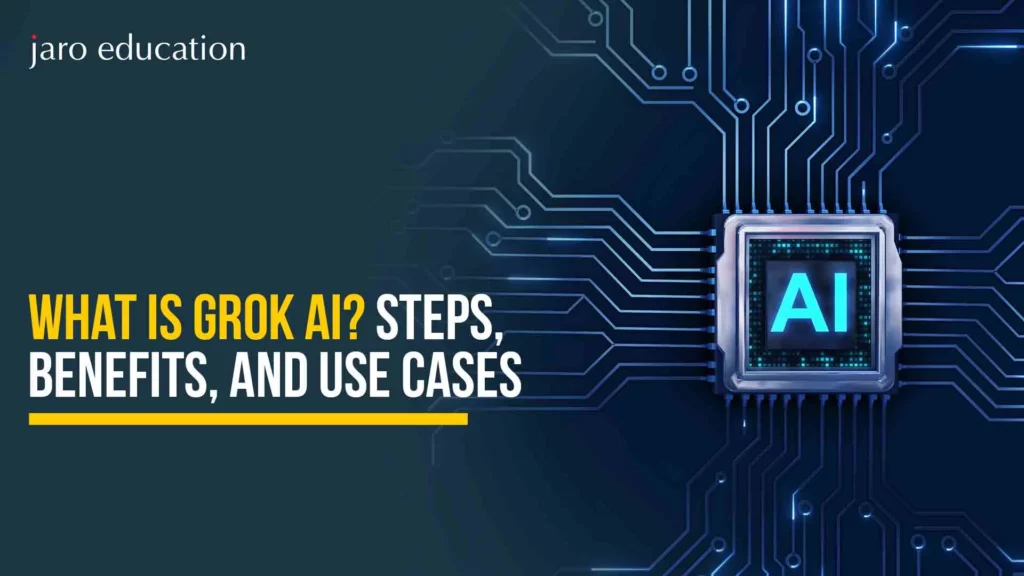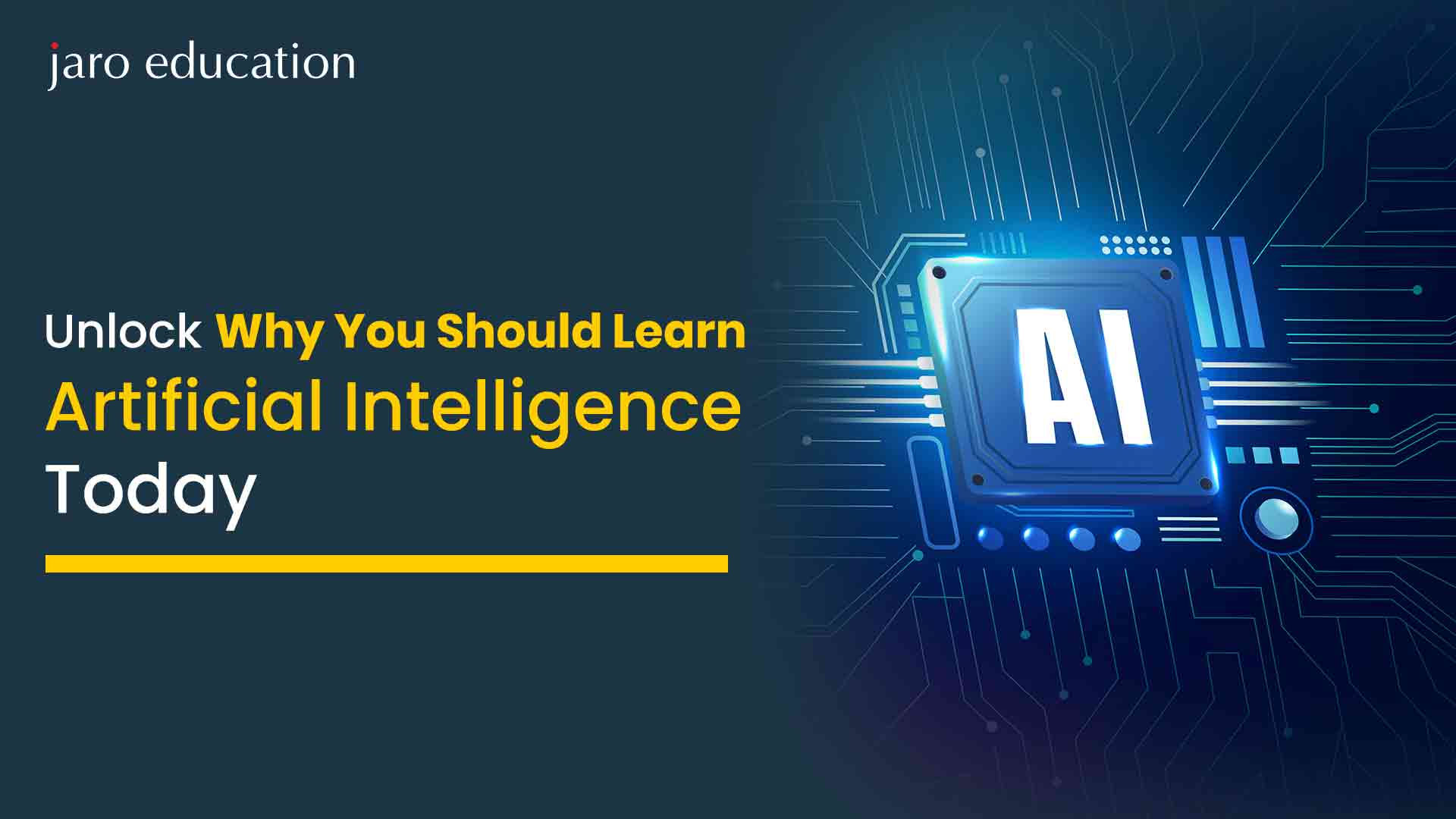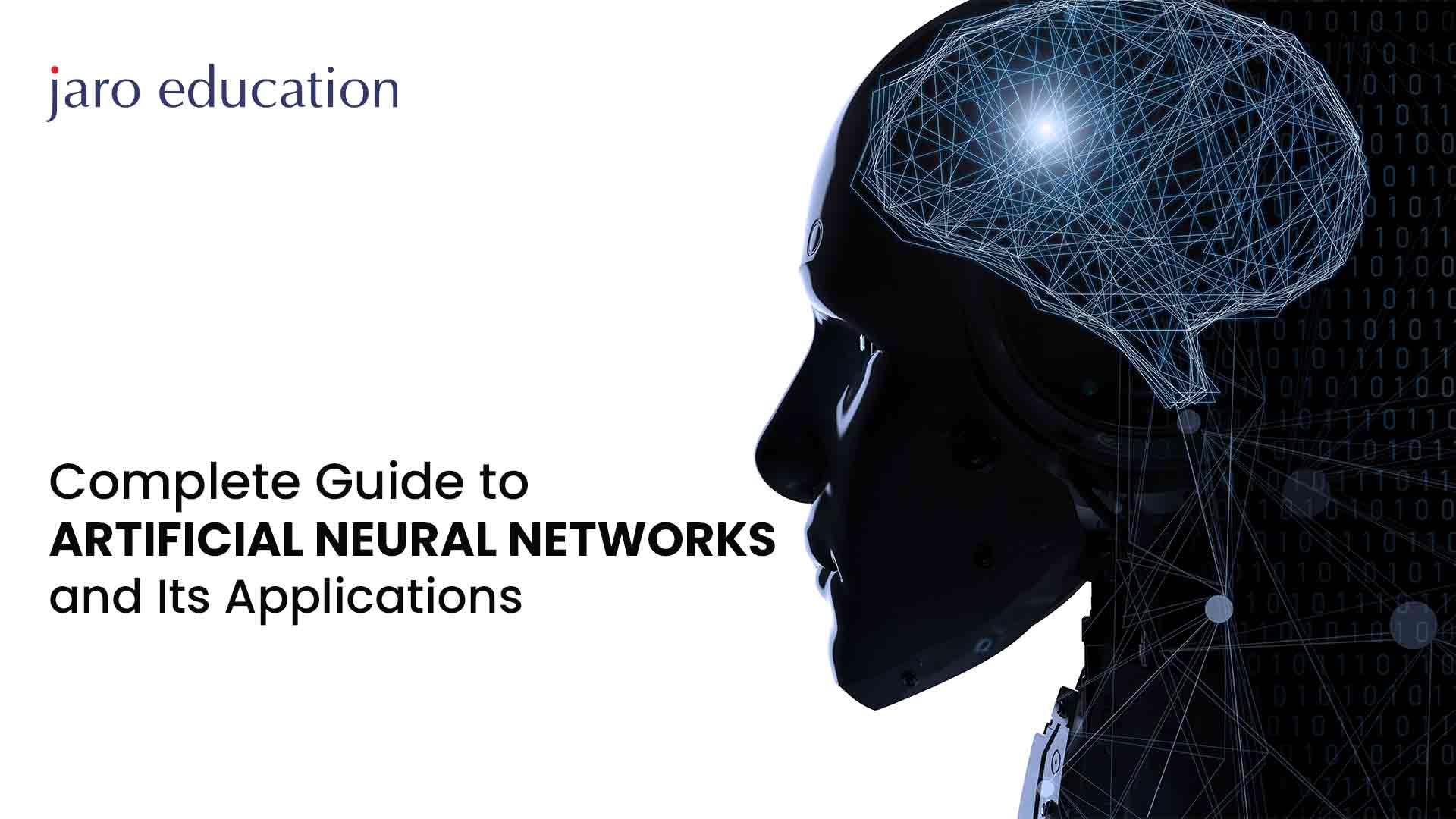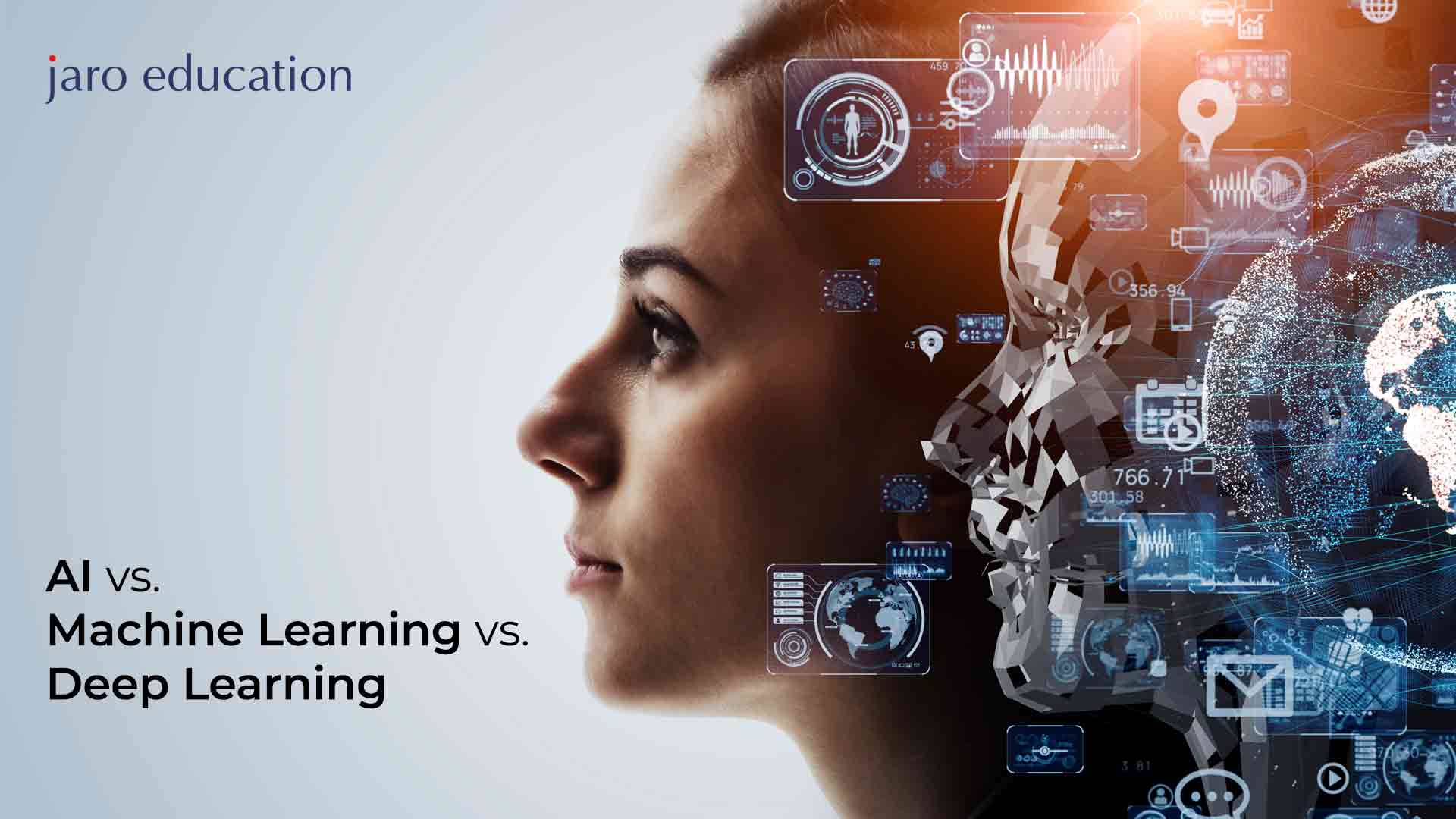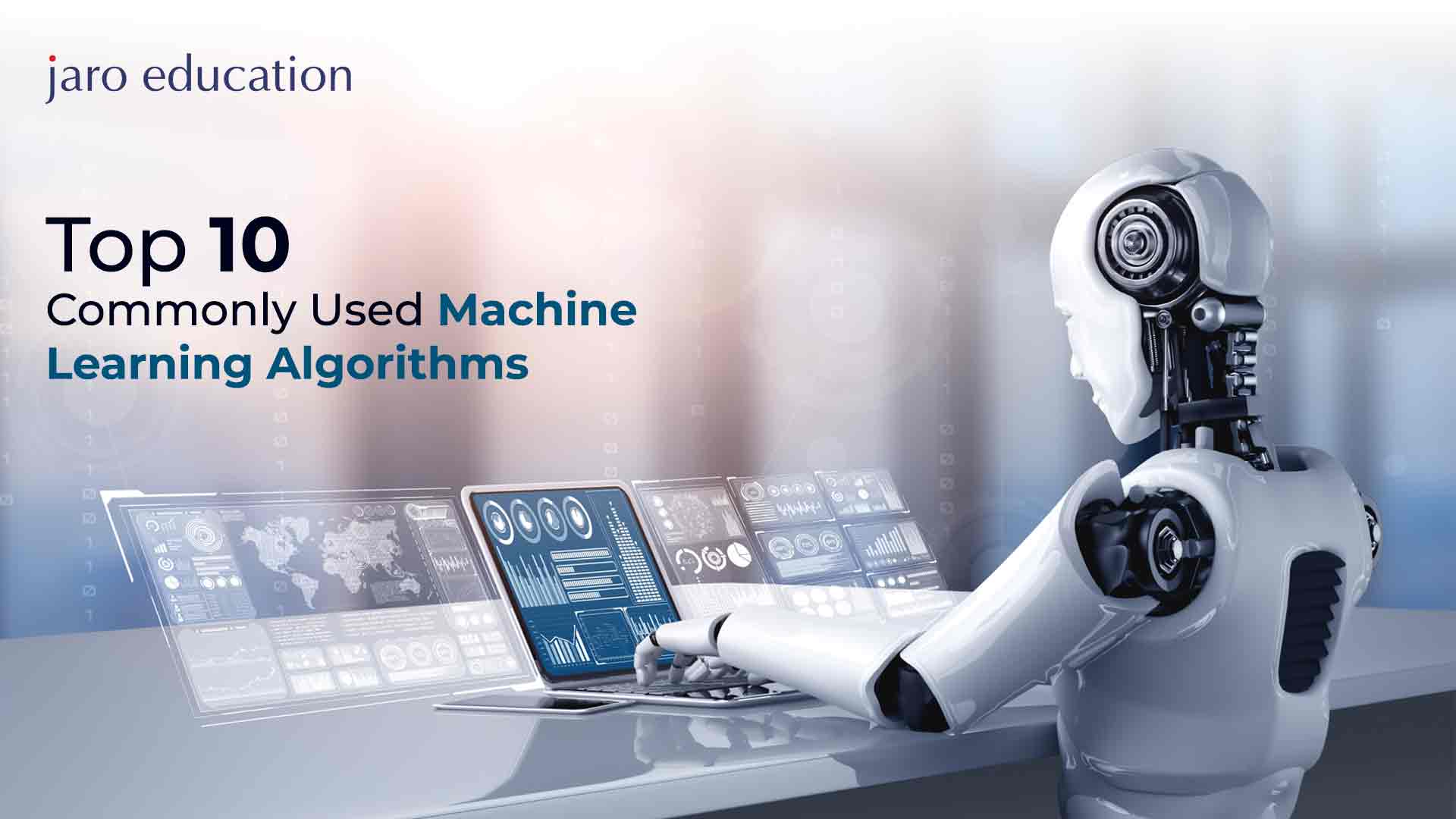How AI and Robotics are Revolutionizing Healthcare 5.0
Table of Contents
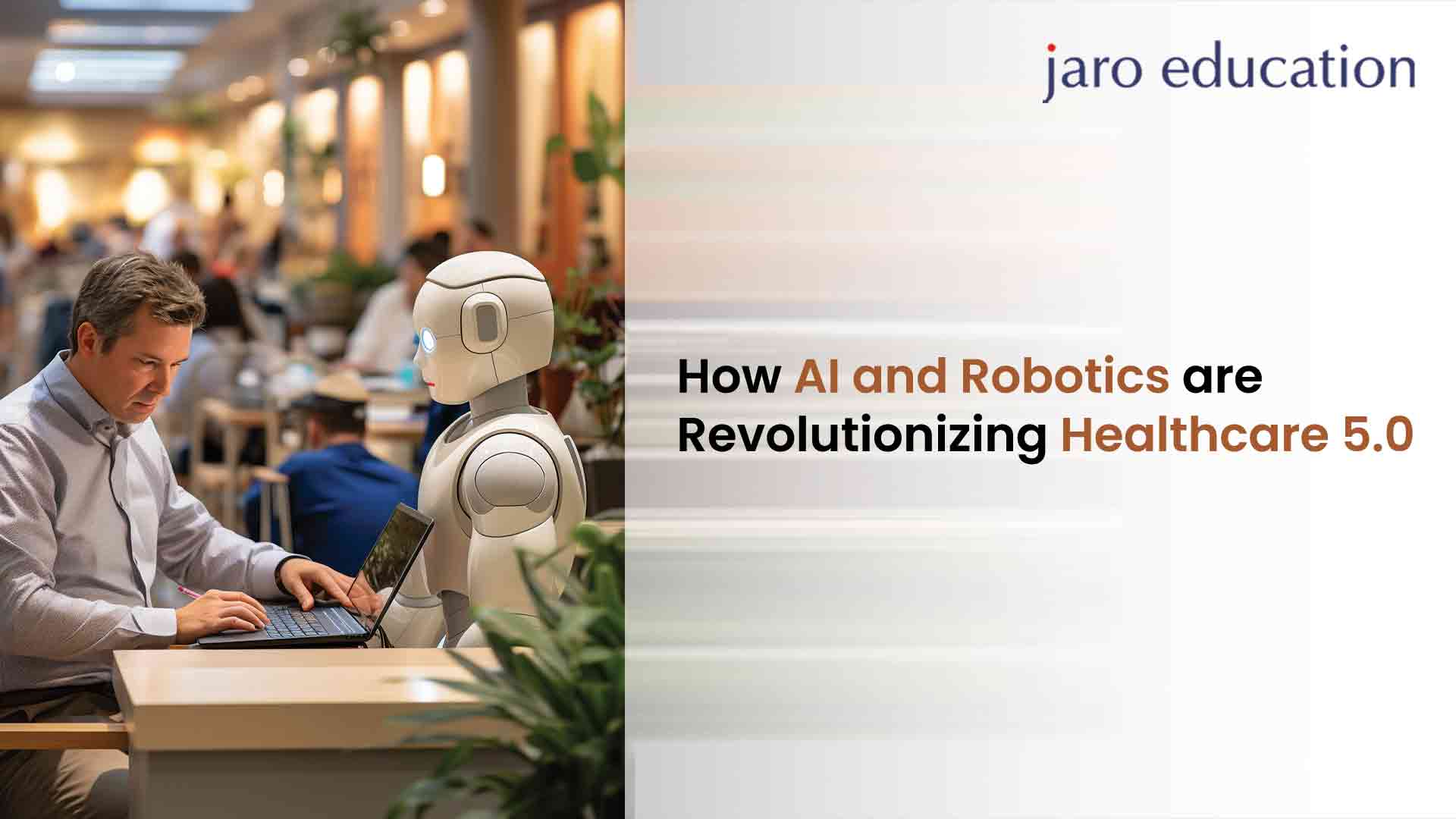
- jaro education
- 9, June 2024
- 6:20 pm
The healthcare industry is undergoing a significant transformation driven by the rapid advancements in artificial intelligence (AI) and robotics, heralding the era of Healthcare 5.0. This new paradigm leverages cutting-edge technologies to revolutionize patient care, streamline clinical workflows, and enhance operational efficiency, ultimately leading to improved patient outcomes and more effective healthcare delivery systems.
The Executive Programme in Healthcare for Industry 5.0, offered by the Continuing Education Programme (CEP) at IIT Delhi, is designed to equip professionals with the necessary skills and knowledge to navigate and thrive in this evolving landscape. This program is particularly relevant as it prepares participants to harness the full potential of AI and robotics in healthcare settings, ensuring they are at the forefront of technological advancements and innovations.
AI and robotics hold immense potential to transform various aspects of healthcare. AI-driven diagnostic tools can provide more accurate and faster diagnoses, personalized treatment plans can be developed using machine learning algorithms, and robotics in healthcare systems can assist in surgeries, reducing the risk of human error and enhancing precision. Additionally, these technologies can automate routine administrative tasks, allowing healthcare professionals to focus more on patient care and less on paperwork, thereby improving overall efficiency and reducing burnout.
The growing importance of AI and robotics in healthcare is underscored by their ability to address some of the most pressing challenges in the industry. From managing the complexities of chronic diseases and improving the accuracy of medical imaging to optimizing resource allocation and enhancing patient monitoring, AI and robotics are becoming indispensable tools in modern healthcare. By adopting these technologies, healthcare providers can deliver more effective and personalized care, ultimately leading to better health outcomes for patients.
In this context, the Executive Programme in Healthcare for Industry 5.0 by CEP, IIT Delhi, emerges as a crucial initiative. It empowers healthcare professionals with the expertise to leverage AI and robotics in healthcare, positioning them to lead and innovate in an industry that is rapidly evolving towards a more technologically advanced future.
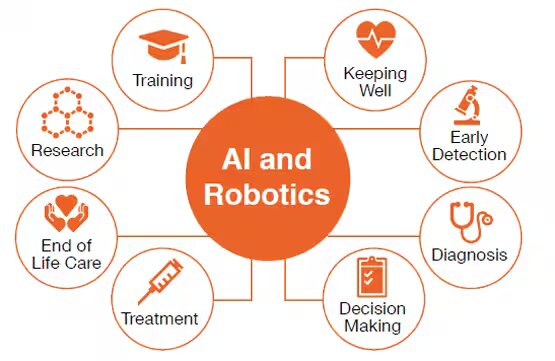
The Role of AI in Healthcare Transformation
Diverse Applications of AI in Healthcare
AI has become a transformative force in healthcare, offering diverse applications that enhance clinical and operational efficiencies:
- Medical Imaging Analysis: AI algorithms, particularly deep learning models, can analyze medical images with remarkable accuracy, often surpassing human capabilities. AI-powered tools are used for detecting conditions like cancer, heart disease, and neurological disorders by analyzing X-rays, MRIs, and CT scans.
- Disease Diagnosis: AI systems can diagnose diseases at an early stage by analyzing patterns in patient data, including symptoms, medical history, and genetic information. These systems can predict the likelihood of diseases such as diabetes, Alzheimer’s, and various forms of cancer, leading to earlier interventions and better outcomes.
- Treatment Planning: Personalized treatment plans can be developed using AI, which analyzes vast amounts of data from clinical trials, patient records, and medical literature. This helps in identifying the most effective treatment strategies tailored to individual patients.
- Drug Discovery: AI accelerates the drug discovery process by predicting how different compounds will interact with targets, identifying potential new drugs, and optimizing drug formulations. This significantly reduces the time and cost associated with bringing new drugs to market.
- Personalized Medicine: AI enables personalized medicine by integrating genetic information, lifestyle data, and patient preferences to tailor treatments to individual needs. This approach enhances the efficacy of treatments and reduces adverse effects.
Evolution of AI Technologies in Healthcare
The evolution of AI in healthcare has progressed through several stages:
- Rule-Based Systems: Early AI applications relied on rule-based systems, which used predefined rules to make decisions. These systems were limited by their inability to learn from new data and adapt to new situations.
- Machine Learning Algorithms: The next stage involved machine learning algorithms, which could learn from data and improve over time. These algorithms paved the way for more sophisticated applications, such as predictive analytics and pattern recognition in medical data.
- Deep Learning Models: Deep learning, a subset of machine learning, uses neural networks with many layers to analyze complex data. Deep learning models excel in tasks like image and speech recognition, making them ideal for medical imaging and diagnostics.
- Natural Language Processing (NLP): NLP enables AI to understand and interpret human language, facilitating applications such as automated medical transcription, clinical documentation, and the analysis of unstructured data in electronic health records (EHRs).
Real-World Examples of AI-Driven Innovations in Healthcare
Several high-profile AI-driven innovations are transforming healthcare practices:
- IBM Watson for Oncology: IBM Watson uses AI to assist oncologists in diagnosing and treating cancer. It analyzes medical literature, patient records, and clinical trial data to provide evidence-based treatment recommendations, improving decision-making and patient outcomes.
- Google’s DeepMind Health: DeepMind Health leverages AI to enhance patient care through predictive analytics. One notable application is the early detection of acute kidney injury (AKI), which can significantly improve patient survival rates and reduce healthcare costs.
These examples highlight the transformative impact of AI on healthcare, showcasing its potential to revolutionize patient care, improve clinical outcomes, and enhance operational efficiencies. As AI technologies continue to evolve, their integration into healthcare systems will become increasingly essential for addressing current and future challenges in the industry.
The Role of Robotics in Healthcare Transformation
Role of Robotics in Healthcare Delivery
Robotics in healthcare is revolutionizing healthcare delivery across various domains, enhancing precision, efficiency, and patient care:
- Surgical Procedures: Robotic-assisted surgery allows for minimally invasive procedures, improving precision, reducing recovery times, and minimizing complications. Systems like the da Vinci Surgical System enable surgeons to perform complex surgeries with enhanced dexterity and control.
- Rehabilitation Therapies: Robotics in healthcare plays a crucial role in rehabilitation, aiding patients in regaining mobility and strength. Robotic exoskeletons and therapy robots assist in the rehabilitation of stroke victims, spinal cord injuries, and other mobility impairments, facilitating more consistent and effective therapy sessions.
- Patient Monitoring: Robots equipped with AI and sensors can monitor patient vitals, administer medication, and alert healthcare providers to any anomalies. This continuous monitoring improves patient safety and enables timely interventions, especially in critical care settings.
- Elder Care: Companion robots and assistive devices support the elderly by providing companionship, reminding them to take medications, and assisting with daily activities. These robots enhance the quality of life for elderly individuals, allowing them to maintain independence longer.
Evolution of Robotic Technologies in Healthcare
The development of robotics in healthcare has seen significant advancements:
- Assistive Robots: Early robotics in healthcare applications focused on assisting with repetitive tasks and providing mobility support. Examples include robotic limbs and mobility aids for disabled individuals.
- Exoskeletons: Robotic exoskeletons have advanced rehabilitation therapy by providing physical support and enhancing the movement capabilities of patients. These devices are crucial in helping patients recover from severe injuries and neurological conditions.
- Autonomous Surgical Systems: Autonomous robotics in healthcare systems are now capable of performing specific surgical tasks with high precision. These systems reduce human error and enhance the outcomes of complex surgeries.
- Telepresence Robots: Telepresence robotics in healthcare enable remote consultations, allowing healthcare providers to interact with patients in different locations. This technology is particularly useful in rural areas and during pandemics, improving access to healthcare services.
Real-World Examples of Robotic Applications in Healthcare
Robotic technologies are making significant impacts in various areas of healthcare, showcasing their versatility and effectiveness:
- Surgical Robots for Minimally Invasive Procedures: The da Vinci Surgical System enhances surgical precision for minimally invasive procedures like prostatectomies and cardiac surgeries, leading to faster recovery and fewer complications.
- Rehabilitation Robots: Devices like the Lokomat provide intensive walking therapy for stroke patients, improving mobility and reducing the burden on therapists through consistent, adjustable training sessions.
- Companion Robots: Paro and ElliQ offer emotional support and assistance to the elderly. Paro provides companionship, reducing stress, while ElliQ aids with daily tasks and facilitates communication with family, enhancing independence and well-being.
These examples highlight the transformative potential of robotics in healthcare, demonstrating how they can improve surgical outcomes, enhance rehabilitation processes, and support elderly care. As robotic technologies continue to advance, their applications are expected to expand, further revolutionizing healthcare delivery and patient experiences.
Ethical Considerations and Challenges in AI and Robotics Adoption
Key Ethical Considerations and Challenges
The adoption of AI and robotics in healthcare presents several ethical considerations and challenges that need careful attention:
- Patient Privacy and Data Security: The extensive use of AI and robotics in healthcare involves the collection and analysis of vast amounts of patient data. Ensuring this data is securely stored and used responsibly is paramount to maintaining patient privacy and trust.
- Algorithmic Bias: AI systems and robotics in healthcare can inadvertently perpetuate or even exacerbate biases present in the data they are trained on. This can lead to unequal treatment outcomes across different patient groups, particularly those who are underrepresented in the data.
- Human-Robot Interaction: The integration of robotics in healthcare settings raises questions about the nature of human-robot interactions, the potential for reduced human contact, and the need to ensure that robots are perceived as assistive tools rather than replacements for human caregivers.
- Transparency and Accountability: AI algorithms can be complex and opaque, making it difficult for clinicians and patients to understand how decisions are made. Ensuring transparency and accountability in AI decision-making processes is critical to maintaining trust and ethical standards.
Strategies for Addressing Ethical Concerns
To address these ethical concerns, several strategies can be employed:
- Development of Transparent and Accountable AI Algorithms: AI developers should prioritize creating algorithms that are interpretable and explainable. This involves documenting how decisions are made and providing clear rationales for AI-driven recommendations.
- Robust Data Governance Frameworks: Establishing comprehensive data governance frameworks is essential to protect patient data. This includes implementing strict data access controls, anonymizing patient data where possible, and ensuring compliance with data protection regulations such as GDPR and HIPAA.
- Interdisciplinary Collaboration: Collaboration between clinicians, technologists, ethicists, and policymakers is crucial for the ethical deployment of AI and robotics. Such collaboration ensures that diverse perspectives are considered and that ethical principles are integrated into the development and implementation processes.
- Role of Education and Training: Educating healthcare professionals about the ethical implications of AI and robotics in healthcare is vital. Training programs should focus on promoting ethical AI practices, understanding the limitations and potential biases of AI and robotics in healthcare systems, and fostering a culture of responsible innovation.
Case Studies and Ethical Dilemmas
Several case studies highlight the ethical dilemmas and controversies in AI and robotics in healthcare:
- AI Algorithms in Diagnostic Decision-Making: The use of AI and robotics in healthcare in diagnostic decision-making can raise ethical concerns, particularly if the algorithm’s decision is not easily interpretable by clinicians. For example, an AI system that predicts cancer risk based on imaging data might be accurate but may also be based on patterns that are not clinically understood, leading to potential mistrust and reluctance to adopt the technology.
- Autonomous Robots in Patient Care: The deployment of autonomous robotics in healthcare in patient care settings, such as robots that assist with daily activities for elderly patients, presents ethical challenges related to consent, autonomy, and the quality of human interaction. For instance, while these robots can enhance independence and provide critical assistance, they may also lead to reduced human contact and social isolation if not properly integrated into care plans.
These examples underscore the importance of addressing ethical issues proactively to ensure that the benefits of AI and robotics in healthcare are realized while minimizing potential harms. By fostering a culture of ethical awareness and collaboration, the healthcare industry can navigate the complexities of AI and robotics adoption responsibly and effectively.
AI and robotics in healthcare are revolutionizing healthcare delivery and patient care in the era of Healthcare 5.0. These technologies enhance diagnostic accuracy, personalize treatment plans, streamline workflows, and improve patient management, leading to better healthcare outcomes. The Executive Programme in Healthcare for Industry 5.0 by CEP, IIT Delhi, is essential for equipping healthcare professionals with the skills to leverage these technologies effectively and ethically.
Industry stakeholders should embrace AI and robotics in healthcare to drive positive change while addressing ethical concerns like patient privacy, data security, algorithmic bias, and human-robot interaction. Key strategies include developing transparent AI and robotics in healthcare, establishing robust data governance, fostering interdisciplinary collaboration, and ensuring transparency and accountability.
As we move forward, it’s important to remember that “the best way to predict the future is to create it.” By combining technological innovation with ethical integrity and human compassion, we can create a healthcare system that truly meets the needs of the future.


